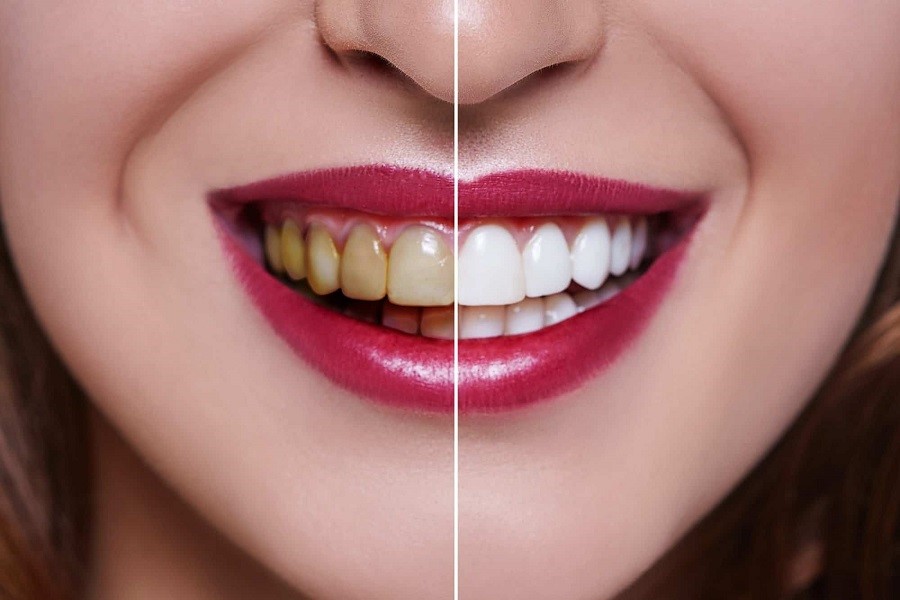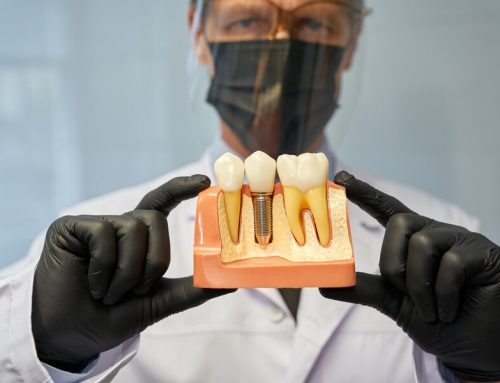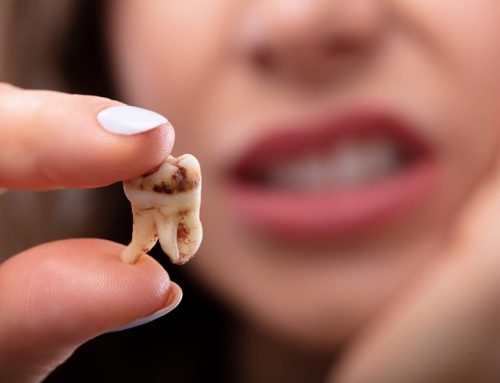The beauty of a smile is known to be one of the most important components of personal attractiveness. People who care about their oral health and teeth know well that improving the appearance of their teeth can have a positive impact on their self-confidence and social relationships. In this regard, there are two popular and common methods in the field of dental hygiene and beauty: scaling and bleaching. Although both processes help improve the health and beauty of teeth; they have significant differences in terms of purpose, method and results. In this article, we will examine these differences and explain the importance of each in improving oral health. Join us to examine the difference between scaling and tooth bleaching and learn more about these methods.
What is bleaching?
Teeth bleaching is one of the common and effective methods for brightening the color of teeth and removing their surface and deep stains. This method uses special chemicals, such as hydrogen peroxide or carbamide peroxide, that penetrate deep into the tooth enamel structure and break down pigment compounds. Bleaching can be done in a dental office (professional bleaching) or at home using home kits. In a professional method, the dentist uses stronger gels along with laser or LED light to accelerate the whitening process, which has faster results. In contrast, home bleaching usually involves special trays that the patient places the whitening gel in and leaves on the teeth for a certain period of time.
To examine the difference between scaling and tooth bleaching, we need to look at their results. Bleaching results can last from several months to several years, depending on the initial discoloration of the teeth, the type of materials used, and oral hygiene. However, excessive consumption of pigmented beverages such as coffee, tea, soda, and smoking can reduce the bleaching effect and gradually return the yellow color of the teeth. This method is suitable for people with healthy, decay-free teeth; however, in cases where stains are caused by certain medications or fluorosis, this method may not be very effective. Also, people with sensitive teeth may experience temporary sensitivity after bleaching, which is usually resolved by using special toothpastes. Overall, bleaching is a quick and effective solution to achieve a brighter smile; but it requires after-treatment care.
What is scaling?
Continuing with the difference between scaling and teeth bleaching, we come to the concept of scaling. Dental scaling is a therapeutic and preventive method in dentistry that is performed to remove tartar and hardened plaque on the teeth and below the gum line. Tartar is the same microbial plaque that forms due to the accumulation of bacteria and food on the teeth and, if not cleaned in time, turns into hard tartar and causes undesirable conditions such as gum inflammation (gingivitis) and, in more severe cases, periodontal diseases (diseases of the tissue that supports the teeth). Scaling usually has two main methods: the manual method, in which the dentist uses special tools to scrape off the tartar, and the ultrasonic method, which uses vibration waves to break up and remove hard tartar. In addition to improving gum health, this process eliminates bad breath and reduces the risk of tooth decay.
Read more: What can whiten yellow teeth?
Contrary to what some people think, scaling does not remove tooth enamel and, if done correctly, does not cause any damage to the teeth. After scaling, the teeth may become slightly sensitive, which is usually temporary and can be reduced by using special toothpastes. Regular scaling (at least every six months) is recommended; especially for people who smoke, drink a lot of coffee and tea, or have a history of gum disease. Failure to scale on time can lead to gum recession, loose teeth, and even tooth loss; therefore, scaling is an essential measure to maintain oral and dental health and, unlike teeth whitening (bleaching), does not affect the natural color of the teeth. The most important difference between scaling and teeth bleaching is that scaling only removes yellow and brown plaque and deposits to give teeth a cleaner and healthier appearance.
Cleaning or whitening? Which is better for you?
If you’re looking for healthy, shiny teeth, you’re probably torn between scaling (cleaning) and teeth bleaching (whitening). Each of these methods has its own goals, advantages, and disadvantages, and choosing the best option depends on the condition of your teeth and your expectations. Here’s a look at the differences between scaling and teeth bleaching so you can make the right decision:
Benefits of scaling (teeth cleaning)
Benefits of scaling include:
Maintains healthy gums and teeth
Scaling is a treatment that helps remove plaque and hardened tartar from your teeth and below the gum line. This prevents gum disease, such as inflammation and bleeding, and reduces the risk of tooth decay. People who get regular scaling tend to have healthier mouths and fresher breath.
Removing surface stains
The biggest difference between scaling and teeth bleaching is that scaling does not change the color of the teeth and make them whiter; but it can partially remove surface stains caused by coffee, tea, cigarettes, and pigmented foods. This makes the teeth look cleaner and clearer; therefore, people who are looking for a natural and stain-free smile can benefit from this method.
Preventing bad breath
Dental plaque and microbial plaque are one of the main causes of bad breath. These deposits are removed by scaling, and the oral environment is clean and free of harmful bacteria. The result will be fresher breath and a better feeling throughout the day.
More affordable and cost-effective
It is impossible to examine the difference between scaling and teeth bleaching without paying attention to the costs of these two methods. The costs of both teeth whitening and scaling vary depending on the location of the treatment, the number of sessions, the type of service, and even the reputation of the dentist. However, in general, scaling is usually more affordable and reasonable, as it is more of a preventative and hygienic treatment to remove plaque and bacteria from the teeth and gums, and is usually covered by health insurance. In contrast, bleaching, which is more of a cosmetic procedure, costs more than scaling, and insurance will not cover it, especially if professional and laser methods are used.
Disadvantages of Scaling (Teeth Cleaning)
The disadvantages of scaling are as follows:
Temporary Tooth Sensitivity
Some people experience tooth sensitivity after scaling, especially if there is a lot of plaque on their teeth. This sensitivity is usually temporary and can be reduced by using a hypoallergenic toothpaste. However, it may be uncomfortable for some people.
No discoloration
Scaling cleans teeth, but it does not change their natural color, which is the main difference between scaling and teeth bleaching. If your teeth are naturally yellow or discolored, scaling will not help whiten them much. In such cases, bleaching will be a better option for changing tooth color.
Benefits of Bleaching
Among the important and notable benefits of bleaching are the following:
Fast and effective results
With professional bleaching, the change in tooth color can be seen in less than an hour. Unlike home methods that may take weeks, bleaching in the dental office has immediate and noticeable results; so if you are looking to whiten your teeth in a short period of time, this method is ideal.
Increased beauty and self-confidence
Continuing to examine the difference between scaling and tooth bleaching, we should point out that bleaching is one of the fastest ways to have a brighter and more beautiful smile. This method can lighten the color of your teeth by several degrees and remove deep stains caused by food and drink consumption. The result will be increased self-confidence and improved appearance of your smile.
Various methods for bleaching
Bleaching can be done in a variety of ways, including in-office bleaching using laser or LED light and at-home bleaching using special trays and whitening gel. This variety of methods allows people to choose an option that suits their conditions and budget.
Disadvantages of bleaching (teeth whitening)
Disadvantages of bleaching include the following:
Teeth sensitivity after treatment
One of the most common side effects of bleaching is tooth sensitivity after treatment. This sensitivity is usually temporary and decreases after a few days; but it may be bothersome for some people. Using special toothpastes and avoiding very cold or hot foods and drinks can help reduce this sensitivity.
Limited durability and the need for periodic renewal
When examining the difference between scaling and tooth bleaching, we should also mention their results and durability. Teeth whitening is not a permanent solution and may need to be repeated depending on the person’s diet and hygiene habits. Excessive consumption of coffee, tea, cigarettes, and colored foods can cause the yellowing of teeth to gradually return. You will need to take special care to maintain the results.
Possible tooth color mismatch
If a person has crowns, implants, or old fillings on their teeth, bleaching cannot change their color. This can cause a color difference between the natural and restored teeth and require further correction.
If your goal is to have healthy teeth and prevent gum problems and cavities, scaling (teeth cleaning) is a better option. This method helps with oral hygiene and prevents bad breath, gingivitis, and dental problems; however, if your teeth are healthy and you are just looking to make them whiter, teeth whitening is the right solution. This method can make your teeth several shades lighter in a short period of time and give you a more attractive smile.
After reviewing the difference between scaling and teeth bleaching, the best decision may be to use a combination of both methods; that is, first scaling to remove tartar and plaque, and then, if necessary, bleaching to whiten your teeth. This will not only give you healthier teeth, but you will also enjoy the beauty of your smile more!
How to keep your teeth bright and healthy?
Having bright and healthy teeth helps to beautify your smile and has a great impact on your overall health. Here are some important and effective ways to keep your teeth healthy and bright:
1. Maintain good oral hygiene
Brushing at least twice a day with fluoride toothpaste is the most important step in preventing tooth decay. Also, flossing daily removes plaque and food particles left between your teeth and prevents tartar buildup. Antibacterial mouthwashes can also help reduce bacteria and keep your mouth fresh.
2. Eat foods that are good for your teeth
Foods rich in calcium, phosphorus, and vitamin D, such as dairy products, almonds, fish, and green leafy vegetables, help strengthen tooth enamel. Eating crunchy fruits and vegetables like apples, carrots, and celery can increase saliva production and help clean your teeth. On the other hand, consuming too much sugar and acidic drinks like soda can cause tooth decay and staining. Regardless of the difference between scaling and whitening, and regardless of what methods you use to keep your mouth and teeth healthy and beautiful, you should be careful about your diet.
3. Drink enough water
Water is not only essential for your health, but it also helps wash away food residue and reduce harmful acids in your mouth. Drinking water after consuming pigmented foods like coffee and tea will also prevent tooth discoloration. It is best to reduce your consumption of sugary and carbonated drinks that damage tooth enamel to a minimum to have healthier and whiter teeth.
4. Avoiding Bad Habits for Teeth
Now that we have learned the concept and difference between scaling and teeth whitening, we know that habits such as chewing ice, opening bottle caps with our teeth, drinking too much coffee, and smoking are among the factors that damage and discolor tooth enamel over time, and eliminate the effects of both methods. Quitting these habits and using a straw when drinking acidic drinks can help maintain the health of our teeth and prevent their discoloration.
5. Regular visits to the dentist
It is essential to visit the dentist every six months for scaling and checking the health of your teeth; even if you do not feel any problems with your teeth. This helps in early detection of problems such as cavities and gum disease and prevents costly treatments in the future.
6. Using Natural Methods to Brighten Your Teeth
Some natural methods, such as brushing your teeth with baking soda (once or twice a week) or using coconut oil to rinse your mouth, can help reduce surface stains on your teeth. Of course, these methods are not a substitute for brushing and flossing and should be used with caution.
Having shiny and healthy teeth requires following the right habits. Regular brushing, proper nutrition, avoiding harmful habits, and periodic visits to the dentist are the most important factors that can contribute to the health and beauty of your smile. If you follow these principles, you will have healthy, shiny, and decay-free teeth!
Conclusion
In this article, we tried to fully examine the concept and difference between scaling and bleaching teeth. Having healthy and shiny teeth not only makes your smile more beautiful, but also has a direct impact on the overall health of the body. There are various methods for whitening and cleaning teeth. Bleaching and scaling are both methods for improving the appearance of teeth; but they have different goals and results. If you are looking to improve oral health and prevent gum problems, scaling is a good option; but if your goal is to increase the brightness and beauty of your smile, bleaching will be a better choice. In some cases, a combination of both methods can bring the best result. Ultimately, choosing the right method depends on the condition of your teeth and your expectations, as well as the dentist’s advice. Don’t forget that the most important thing is that daily care of your teeth is the best way to maintain their whiteness and health in the long term.







Leave A Comment